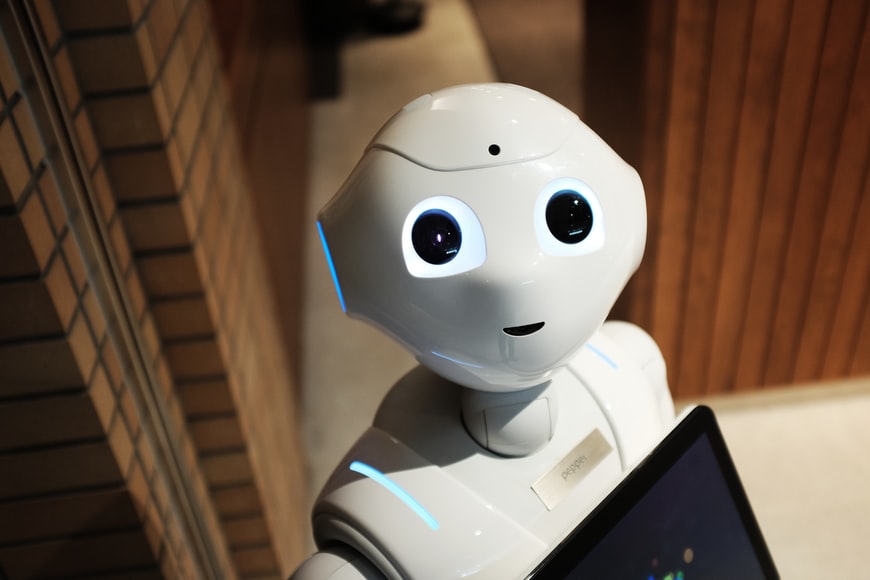It is likely that you have heard of automated customer service through chatbots or even have come into contact with this technology when being served by a company.
The question is, do you know the details of this solution and all the possibilities it can offer your business? Today, we bring you some market insights and alternatives that the use of a chatbot can add to your reality. Let’s get to it!
First of all, it is important to note that not all customer service via online chat is a chatbot. There are webchats, which are conversations via web chat, and there are chatbots, which provide automated customer service by answering specific questions asked during the conversation.
So, what is the difference between chatbot and webchat?
Currently, some companies have more webchats (chat-based customer service) than chatbots (with automation).
However, a chatbot is much more efficient in solving interactions that can be easily identified. For instance, when a user contacts the company seeking quick information, such as opening hours, a chatbot can provide this answer instantly, eliminating the need for a human attendant to respond to the same question repeatedly.
Consequently, this saves time and manpower, optimizing service—something that often does not happen with webchat, which requires an attendant to view the message and respond.
An incredible advantage of implementing this technology is the standardization of customer service. With standardization, service becomes more traceable and effective.
If the robot is unable to answer the customer, the chatbot can transfer the conversation to a human representative.

What are the main types of chatbot?
A chatbot can be seen in two ways: consultative or resolutive. These are terms used by our developers to differentiate the main purposes of a chatbot.
The consultative chatbot helps the customer by delivering simple information, while the resolutive chatbot provides more complex information, enabling the solution of simple or complex problems.
For example, a consultative chatbot designed for a consortium can inform the customer of the next meeting date.
A resolving chatbot, on the other hand, may also allow the customer to make a bid directly within the chat. This means that the resolving chatbot will often need integration with different systems to respond optimally and accurately.
Each chatbot also has a persona, which can be configured for specific areas like customer service, answering all inquiries from your company’s clients.
It can also integrate with your sales team, showcasing products to prospective customers. Therefore, it is crucial that the technology can connect with various systems/databases to take on different functions.
The Evolution of Automated Customer Service Chatbots
In the first generation of chatbots, when artificial intelligence was not yet viable, it was necessary to map customer query lines or offer a menu of options for users to choose from, which is still common today. While this solution may work, it does not facilitate a natural conversation like a new-generation chatbot.
At ília, we usually create automated customer service chatbots through Salesforce, using the Einstein module, which is the platform’s own artificial intelligence.
Through this, we obtain a more analytical method of interpreting user queries and arriving at the intent behind their questions. It is also possible to analyze user emotions to interpret reactions of irony, anger, and satisfaction.
An advanced feature already in use is the interpretation of other algorithms, such as receiving photos or voice inputs to aid in information detection (like facial recognition) and following up with the service.
The machine learning algorithms enhance user experience, making it richer and more engaging.
Why do we build chatbots from Salesforce?
Creating a chatbot from scratch is relatively simple for those with expertise; however, building the neural networks for decision-making is complex.
This is why adding value and speed is vital. As previously mentioned, we often create chatbots using Salesforce. Specifically, the platform allows us to configure the chatbot through an enabled module within the CRM, which is a key differentiator for ília.
With Salesforce, we can deliver a Minimum Viable Product (MVP) within a few weeks, with the chatbot already operational, thus eliminating the need for extensive initial configuration.
This is possible due to the data obtained through CRM integration, resulting in an AI-enabled chatbot. For example, when a customer requests an invoice, the bot can query open invoices and provide alternatives.
The value we gain in terms of time to money is excellent! Additionally, other chatbots often operate on decision trees, which require constant feeding.
In contrast, Salesforce allows the bot to learn from customer interactions, thereby suggesting dialogues tailored to user needs. Indeed, few other tools can achieve this level of adaptability.
Furthermore, Salesforce excels in integration, connecting to all systems.
Consequently, this enables customers to perform self-service regardless of where the information resides—be it in financial systems, other CRMs, or help desks. Ultimately, the bot can meet these demands seamlessly, providing a 360-degree view.

For the best results, the best team
Salesforce simplifies the creation of automated customer service chatbots, but without the right team, our projects wouldn’t be as successful!
A chatbot’s success largely depends on the team involved, who must master the tool and create natural-sounding texts aligned with customer communication.
Specialized UX Designers play a crucial role in this process, ensuring the user journey is well-crafted for an assertive delivery that delights customers.
Similarly, a skilled UX Writer is essential for analyzing human communication styles, ensuring robot interactions are fluid and relatable.
A Curator is responsible for evaluating client visions for new functionalities and adjusting developments as necessary.
Additionally, a Data Analyst specializes in creating dashboards and reports, utilizing specific metrics to enhance the user journey, speeding up information capture and transforming it into actionable insights.
Learn more: Salesforce Einstein and the Transformation Driven by Artificial Intelligence
Is an Automated Customer Service Chatbot Right for Your Company?
It probably is! Virtually every service vertical has sales or service processes that can be enhanced through automated customer service.
Moreover, chatbots can assist internally with HR-related inquiries or onboarding new employees. If you’re seeking a tool to reduce costs, minimize customer service time, and enhance service effectiveness, a chatbot is the ideal solution for you.
In one of ília’s success stories, 65% of calls are initiated by the chatbot—a rate significantly higher than the market average—thanks to the combination of intelligent tools and our professional expertise.
For queries that require human input, they can be seamlessly forwarded to the physical team, allowing for a smaller, more specialized workforce.
It’s essential to remember that chatbots are constantly evolving. They may not always be fully accurate initially, but with time and machine learning, improvements will enhance service efficiency.
Creating chatbots is a priority at ília because it aligns with our three pillars: Design (understanding the chatbot’s function and communication), Technology (integrating with Salesforce and other systems), and Data (improving chatbot performance and ensuring value delivery to clients).
Learn more about how deploying Salesforce and chatbots can elevate your market presence. Schedule a conversation with our experts today to understand why we are the leaders in enterprise technology.
